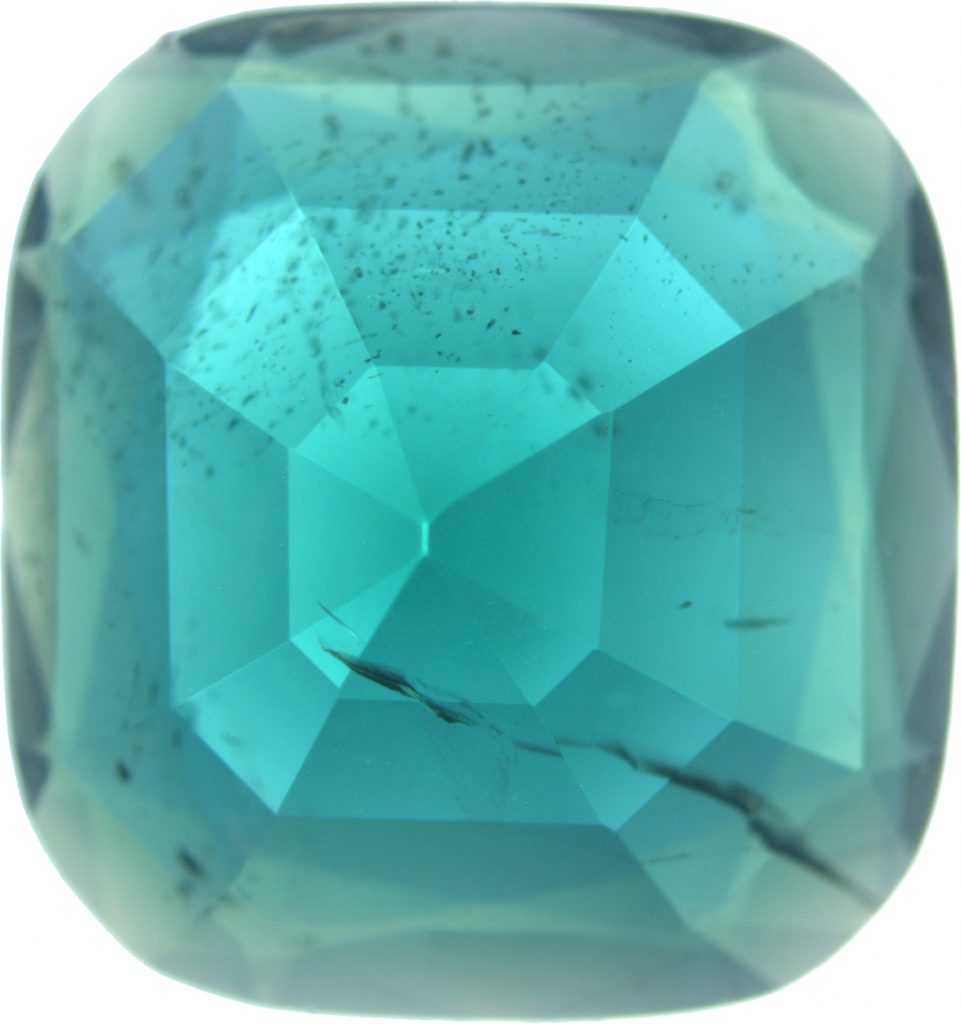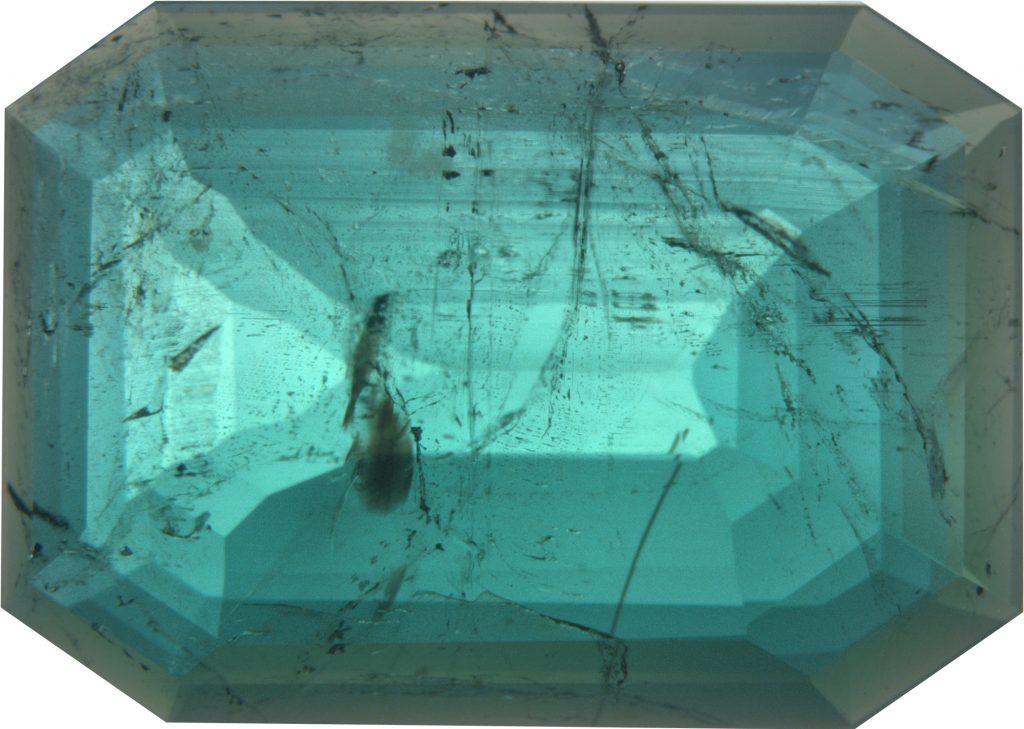Emerald is a stone appreciated for its “gardens”, but these inclusions are whitish and can alter the general color of the stone. Filling cracks with oil and / or resin will reduce these inclusions. This embellishment technique thanks to oil has been known since Pliny the Elder, more than two millennia ago.
Although it might surprise some people, filling with resin is not considered as a treatment.
However, if the oil is colored or if the filling is visible on the surface under a x10 magnification, it will be considered as a treatment.
Fillers may differ, depending on the country. For instance Joban oil is used in India, and it’s green color makes it a treatment – according to the law – even though this oil doesn’t modify the stone’s color.
Cedar oil has a refractive index (RI) close to emerald’s, 1.512, and is appreciated for its thickness which allows a better stability within the frost. There are other fillers as synthetic resins, like Opticon, which was first used in the 1980s in Brazil and has an RI of 1,545. Emerald’s RI is between 1,577 and 1,583.
Other oils can be used, like paraffin oil (RI 1.478) or sesame oil (RI 1.474). Some fillers can even be mixings and their composition is kept secret. The Excel, for example, is a combination of an epoxy resin and a hardener.
The closeness of the refractive indices between the filler and the emerald aims to avoid any deviation of the light ray in the stone. This is very important because France is the only country in the world to have a legislation related to stones treatments; as the Decree No 2002-65 of 14 January 2002 on the trade in gemstones and pearls shows:
Article 2
The word “treated” or the indication of treatment shall be added [except for practices mentioned in Article 3] to the name of gemstones, organic materials, cultured pearls and fine pearls that have gone under irradiation, laser drilling, dye, surface diffusion, filling, and can even apply to gemstones that show residues of a heat treatment or exhibit under a x10 magnification visible refraction ruptures caused by a colorless matter within the external cavities, or have been under any other laboratory method modifying their appearance, color or purity.
Article 3
The inclusion of the word “treated” or indication of treatment is not compulsory for gemstones, organic materials, fine pearls and cultured pearls that have undergone the following traditional lapidary practices:
– impregnation with a fluid colorless substance;
– heat treatment, provided that any surface heating residues doesn’t cause a visible reflection rupture under a x10 magnification;
– bleaching (without any addition of coloring agents or varnishes).
Let us be clear, even if the “fluid colorless substance” mentioned in Article 3 is hardened, the emerald will not be considered as being treated. This may explain a difference in prices. If two stones have similar characteristics and one of them is less expensive, it will be necessary to look at the name of the laboratory that certified it. Since not all of them describe the nature of the filling, it is possible that there is a colorless resin with a hardening agent.
On an international level, the LMHC (Laboratory Manual Harmonization Committe) standardized the filling quantification and classification developed by laboratories and the latter can now refer to this classification. This remains a suggestion and not an obligation.
The French laboratories and the SSEF distinguish between resin and oil. The Swiss laboratory Gübelin refers to the standards issued by the LMHC but does not distinguish between the filling agent and the GRS.
To conclude, do not forget to have your emeralds certified again each time they’re oiled so the certificate can be updated.


